2019-03-09
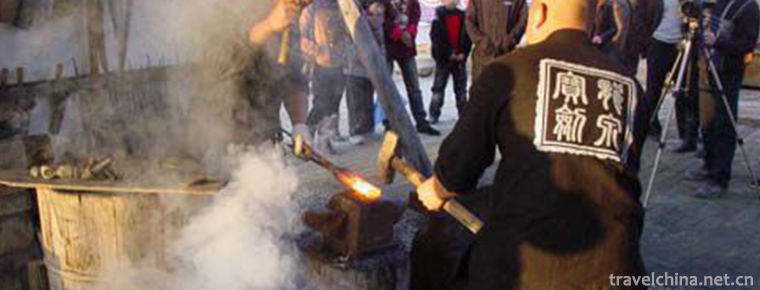
- By ChinaWiki.net
- Chinese Edition
- 2019-05-14
Forging Skill of Longquan Sword
Longquan sword forging technology, the traditional arts and crafts of Longquan County, Zhejiang Province, is one of the national intangible cultural heritage.
The forging technology of Longquan Baojian, from raw materials to finished products, has to go through five core processes: hammering, planer file, polishing, inlaying and quenching. From the initial iron sword, it evolved into steel sword, folding pattern with steel sword, through layers of process, and finally forged into Longquan sword.
In October 2001, Longquan Baojian was listed as one of the first batches of traditional arts and crafts in Zhejiang Province; in December 2004, it was listed in the first batch of national folk art protection lists in Zhejiang Province; in May 2005, it was listed in the first batch of representative works of intangible cultural heritage in Zhejiang Province; and in May 2006, it was listed in the first batch of National Intangible Cultural Heritage Representative works. Item number_-37.
historical origin
Longquan sword has a long history. Legend has it that at the end of the Spring and Autumn Period, Ouyezi, a master of Sword Casting in Yue Kingdom, traveled to the southern provinces of the Yangtze River. When he arrived at Longquan, Zhejiang Province, he found that under the Qinxi Mountains, there were seven wells near the lake, just like the constellation of the Big Dipper in the sky: quenching swords with lake water can enhance the stiffness of swords, which is a good place to cast swords. Ouyezi set up a stove by the lake, and made three swords of "Longyuan", "Tai'a", "Gongbu" from the nearby mountains. They were presented to the King of Chu. They were rewarded, and "Longyuan" swords became famous from then on. Later generations built the temple of General Ouyezi by the well as renamed the cast sword "Longyuan" to commemorate it. The swords produced here are also engraved with the symbols of dragon, Phoenix and seven stars. From this handed down the skills. Later, the old temple remains, with seven wells remaining and one well remaining. During the Tang Dynasty, Longyuan sword had a great reputation. Later, because of avoiding the taboo of Li Yuan, Gaozu of the Tang Dynasty, he replaced "Yuan" with "Quan", and "Longyuan" was renamed "Longquan", which is now Zhejiang Longquan. Later, people renamed Qinxi Mountain Lake Jianchi Lake, built Ouyezi Temple at the northern foot of the mountain, and fabricated many stories about Longquan sword. Li Bai, a poet of the Tang Dynasty, wrote a poem in his poem entitled "Better to know the grass-roots people than the Dragon springs at his waist" in the Water Army Banquet for the Shoguns. Here, Longquan became the representative of "sword".
According to Longquan County Chronicle, Zheng Yisheng's Sword Shop, Liao Taihe's Sword Shop, Thousand-Character Sword Shop and Wanzi Sword Shop were established successively in the Qing Dynasty. They are famous for their sharp blades and excellent quality of swords. By the end of the Qing Dynasty and the beginning of the Republic of China, there were seven swordshops along the North Bank of the stream in Longquan County Town, including 1000, Wanzi, Renzi (Shen Guanglong), Jinzi, Yongzi, He and Zhou Guogui. Among them, thousand, ten thousand and Shen Guanglong are known as the three masters of Longquan Sword. In the nineteenth year of the Republic of China (1930), the number of sword shops in Longquan increased to 11. "At that time, Longquan County had 2,000 swords per year, with an annual total output value of about 8,000 yuan, which were sold in Wenzhou, Hangzhou, Shanghai and other places."
Process characteristics
Longquan Sword, also known as "Seven Stars Sword", can be divided into three basic types according to its different performance: hard sword (known for its rigidity), soft sword (known for its flexibility) and traditional Wushu sword. In addition, there are 29 varieties of cloud foil sword, walking stick sword, fish sausage sword, mandarin duck sword, and nearly 100 styles.
In the long-term development, through the continuous study of casters, Longquan Baojian has formed four traditional characteristics in the quality of products: toughness, sharpness, combination of rigidity and softness, cold light, and delicate decoration.
First, toughness and sharpness; "Cut copper like mud". In 1978, at two national gatherings of the Chinese arts and crafts circles, the artists who made Longquan sword performed in public. With a Longquan sword, he effortlessly split the six overlapped copper plates into two pieces, without rolling the blade.
Second, the combination of rigidity and softness. Ancient Longquan sword was cast with pig iron, and later cast with medium carbon steel. In addition, the proper quenching process made medium carbon steel possess the characteristics of spring steel. If you roll a thin sword into a circle and tie it around your waist, it's like a skirt belt. When it is unraveled, the sword is as straight as ever.
Third, the cold light is pressing. There is a kind of grindstone called "bright stone" in Longquan. Swords polished on such stones shine with cold. Longquan sword is polished by hand, from rough grinding, fine grinding to fine grinding, often takes days or even months, once polished, glare dazzling.
Fourth, the decoration is delicate. The sword is engraved with the seven-star sign and the flying dragon pattern. Carving on the body of the sword is also a stunt of Longquan sword. Swordsmen don't use colored pens, two do not follow the pattern, only use a steel chisel to carve on the wide and not full inch sword body, after carving, pour copper water, after shoveling and grinding, dragon pattern, vivid and natural, never disappear.
Longquan Baojian is famous for its four characteristics. Its material selection is exquisite. It has the saying of "three catties of wool iron and half catties of steel". Its forging and firing temperature is well controlled, its composition is uniform, and its pattern is fresh. Its quenching method is also unique, and its grinding is very exquisite. The forging technique of Longquan sword contains rich cultural connotations and occupies an important position in the history of Chinese weapons, metallurgy and art. Longquan sword is not only a fitness martial arts equipment and stage props for film and television, but also a national gift for foreign guests. It is cherished by people at home and abroad and fencing enthusiasts. Longquan sword was mostly unsheathed in ancient times. Later, the sheath and handle of the sword were made of Local Pear wood. This kind of rosewood has tough texture, beautiful texture and antique fragrance. Decorated with silver and copper, Longquan Sword is even more beautiful.
Technological process
From raw materials to finished products, a Longquan sword goes through five core processes: hammering, planer file, polishing, inlaying and quenching. From the early iron sword, it evolved into steel sword, folding pattern with steel sword.
Punching: Put the iron block in the furnace and burn it to high temperature, and forge it repeatedly by carburizing process to form the best rudiment of the sword.
Planing file: Cut the file with a steel knife, so that the thickness of the sword body is moderate, a certain gradient between the ridge and the blade, the ridge of the sword must be in the middle of the body, in a straight line.
Polishing: Place the filed sword on the wrong stone and polish it. First, rough grinding, then fine grinding.
Mosaic: After polishing, steel needles are used to carve patterns, names and shop numbers on the sword body, and red copper is embedded. After polishing, it is golden and produces color contrast with a sense of inspiration and treasure.
Quenching: The traditional quenching method is used to make the sword body rigid and flexible. This is a high-quality craftsmanship, which is beyond the reach of ordinary craftsmen.
Inheritance and protection
Inheritance value
The traditional techniques of Longquan sword, with their rich cultural functions and social functions, have exerted great influence on the history of cold weapons, metallurgy, ideology and art in ancient China, thus demonstrating the outstanding value of the creativity of the Chinese nation. Today, Longquan sword is not only fitness martial arts equipment, film and television stage props, but also as a national gift given by national leaders, for many celebrities at home and abroad and treasured by sword enthusiasts.
Longquan Sword is an outstanding representative of Chinese sword-making technology, and its production skills are a model of Chinese traditional crafts. Protecting and promoting this folk art is what every Chinese should do. Longquan Sword will continue to write its legend.
Inheritance status
Nowadays, swordforging technology has been completely modernized, which has made a huge impact on traditional skills. The business strategy of enterprises pursuing economic benefits of production and marketing has affected the quality of swordforging, and the environment of swordforging place has also been damaged. These problems lead to the endangered condition of Longquan sword forging technology, which urgently needs rescue and protection.
Inheriting characters
Shen Xinpei, male, Han nationality, born in December 1948 in Longquan City, Zhejiang Province. In 1961, the Sword Production Group of Longquan Iron Manufacturing Co-operatives cast swords with their father. Over the years, he has been exploring, innovating in technology and design, and has developed more than 20 new varieties. In June 2007, determined by the Ministry of Culture, Shen Xinpei, the fourth-generation heir of Shen Guanglong Jianpu, Longquan City, Zhejiang Province, was the representative heir of Longquan Baojian Forging Technology Cultural Heritage Project, and was included in the list of 226 representative heirs of the first batch of national intangible cultural heritage projects.
protective measures
In 1984, the Longquan Municipal Government listed the Jianchihu Site as a cultural relic protection unit at Longquan City level, and rebuilt the previously destroyed Jianchi Pavilion in 1993. Afterwards, the environment around the Jianchihu site was renovated. In the newly built Longquan Museum, there is a special exhibition hall of Longquan Sword, which publicizes the long history and culture of Longquan Sword to the audiences both inside and outside the city, and displays exquisite forging skills and products.
With the encouragement and support of Longquan Municipal Government, Shen Guanglong Jianpu, Wanzi Jianpu, Qianzi Jianpu and Jinzi Jianpu have been restored one after another. These hundred-year-old stores are newly opened, revitalizing the old brand, which has had a greater impact on the domestic and foreign markets.
Since 2000, Longquan Baojian practitioners have been included in the professional title system of Arts and crafts, and the evaluation of professional titles has been carried out, which encourages the enthusiasm of Baojian artists to learn technology.
In July 2000, the Zhejiang Provincial Government implemented the Measures for the Protection of Traditional Arts and Crafts in Zhejiang Province, and carried out the identification, protection and management of the protected varieties and techniques of traditional arts and crafts.
social influence
In 1972, Longquan sword was presented as a national gift to visiting international friends.
In 1992, Longquan Baojian won the gold medal at the International Wushu Expo.
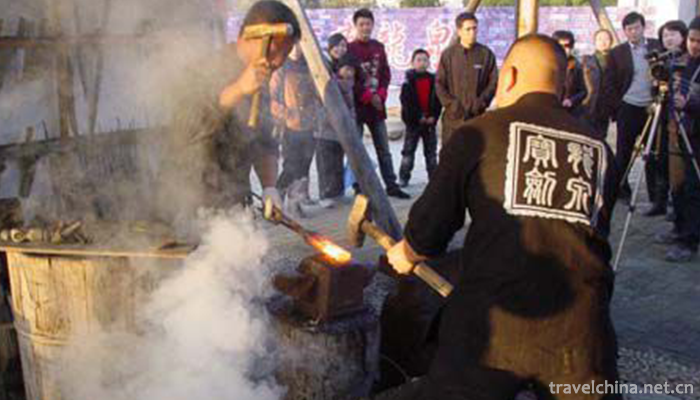
Ask a Question
Your email address will not be published.
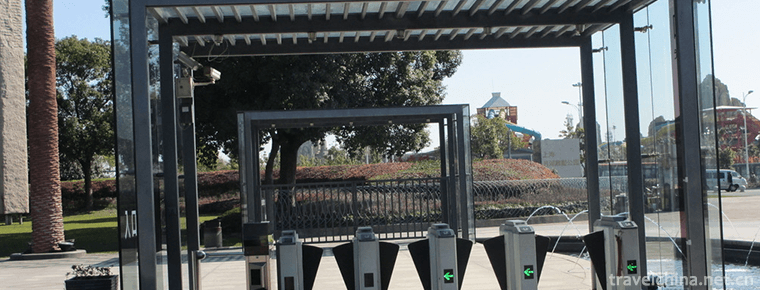
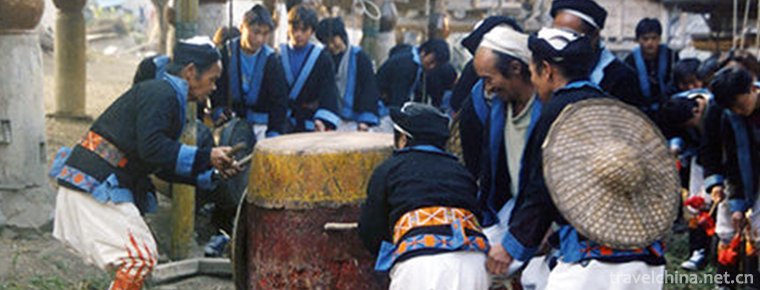
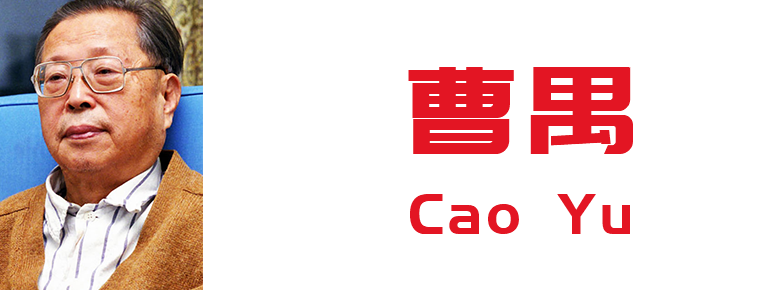
0 Questions